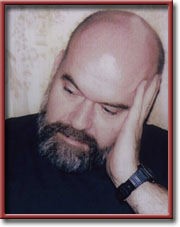Sympathy for Somnipathy
“So while insomniacs may eventually doze, they rarely rest—not well. As a result, they are fatigued during the day. But not fatigued enough to take a nap. The true insomniac, as opposed to a person temporarily deprived of sleep, won’t nap. He remains too aroused, too vigilant, too ruminative.” Sanford Rose
Dolors & Sense
by Sanford Rose

 KISSIMMEE Florida—(Weekly Hubris)—8/20/2012—Insomnia is not a nocturnal ill.
KISSIMMEE Florida—(Weekly Hubris)—8/20/2012—Insomnia is not a nocturnal ill.
It is a day-long indisposition. The typical insomniac has a sweet brain, though he/she may not be a sweet person.
He metabolizes more diurnal glucose in the brain than does the healthy sleeper.
But whereas the healthy sleeper quits at night, reducing sugar burning, the insomniac does not. In the case of the insomniac, the relative decline in cerebral glucose metabolism from waking to sleeping is quite slight.
Excess nocturnal sugar burning shows up in distorted brain waves.
Restorative sleep occurs in slow waves, otherwise dubbed delta waves.
Insomniacs get few of these; they are inconsistent with the fast sugar-burn rate.
So while insomniacs may eventually doze, they rarely rest—not well.
As a result, they are fatigued during the day.
But not fatigued enough to take a nap.
The true insomniac, as opposed to a person temporarily deprived of sleep, won’t nap.
He remains too aroused, too vigilant, too ruminative.
There is of course a price to pay.
Although, as noted, insomniacs burn more overall brain sugar during the day than healthy folk, they suffer from a consumption shortfall in the prefrontal, as opposed to the frontal, cortex.
It is this deficit that may be responsible for most of the medical and psychological problems associated with insomnia.
So what is the cause of insomniac hyper-arousal?
View it this way: The survival of your average cell in the central nervous system depends on a tug-of-war between two proteins: cortisol and brain-derived neurotrophic factor.
Cortisol, which comes from the adrenals, wants to kill the cell. BDNF wants to preserve it.
Whether one or the other triumphs may depend on genetics.
People with certain genetic endowments, the expression of which may be triggered by traumatic life events, develop disorders of the hypothalamic-pituitary-adrenal axis that predispose them to secrete too much cortisol.
The excess cortisol can result in enough cell death to produce an undersized amygdala—the brain part that controls our fear quotient. (It can also reduce the size of other brain segments that regulate the amygdala.)
It is thus conceivable, though it is by no means settled science, that there is a pathway leading from genetic quirks, which result in excess cortisol, to nerve death, which causes a shrinkage of the amygdala, to exaggerated fears, which lead to hyper-arousal and the concomitant need to burn sugar when we should be resting and restoring our metabolic functions.
Sympathy means feeling the pain of others; somnipathy is literally the pain connected with sleep or its absence. The two should be linked.
